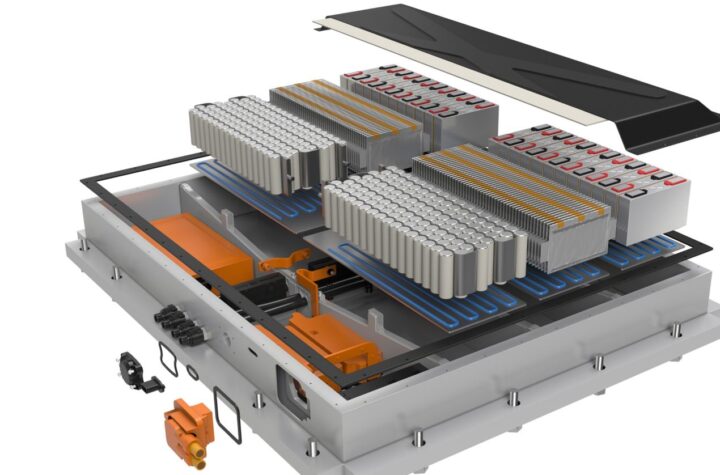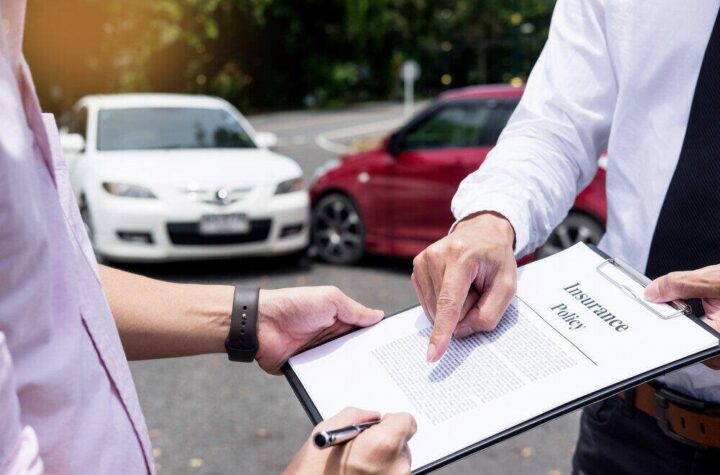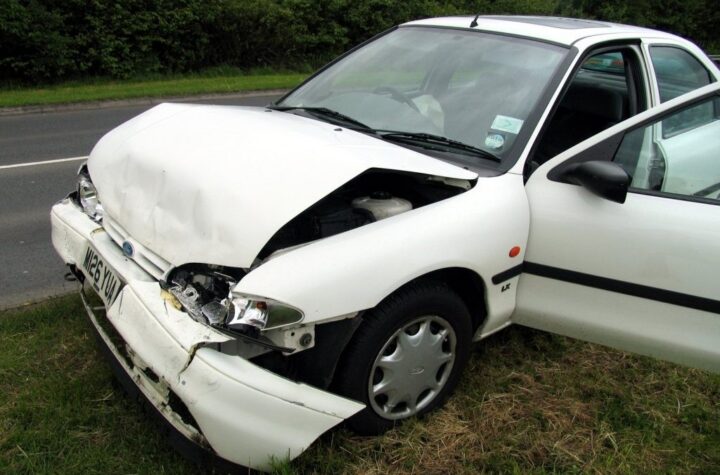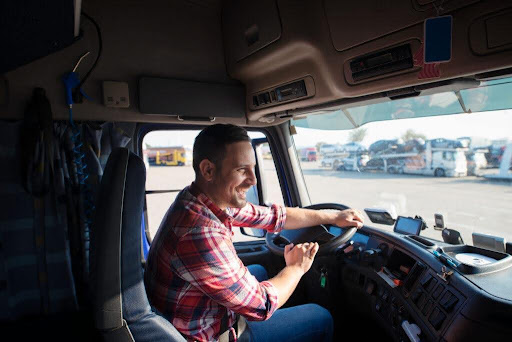
In this exclusive interview with Automotive Industries, Amit Rosenzweig, Ottopia’s Founder and CEO, unveils the intricacies of their groundbreaking teleoperations technology that enables OEMs to unlock billions in subscription revenue. Rosenzweig emphasizes strategic partnerships with industry giants like Hyundai Mobis and T-Systems, illuminating their role in advancing teleoperations adoption. Join us as we delve into Ottopia’s vision, from addressing challenges in integrating with car makers to the fusion of AI, machine learning, and robotics, and their commitment to safety and collaboration.
From the outset, Rosenzweig emphasizes Ottopia’s strategic approach to partnerships, shedding light on how collaborations with industry giants like Hyundai Mobis and T-Systems have played a pivotal role in streamlining the adoption of teleoperations technology. Rather than reinventing the wheel, Ottopia leverages the expertise of established players, crafting an entire ecosystem that facilitates faster integrations and seamless adoption for their customers.
The conversation pivots towards the evolving landscape of autonomous driving, with Rosenzweig addressing the industry shift away from Level 4 autonomy, and a refocus on Levels 2 and 3. He unveils Ottopia’s unique position, positioning remote driving as the linchpin for an on-demand, personal, private driver experience on city streets, complementing autonomy systems which are focused on highways. The dialogue delves into the challenges of catering to consumer demands, emphasizing the importance of defining a compelling end-to-end user experience for various use cases.
The robust and scalable nature of Ottopia’s platform takes center stage in the interview. Rosenzweig provides insights into how the platform accommodates diverse vehicle types, from passenger cars to commercial fleets. Ottopia’s commitment to modularity and flexibility is highlighted, showcasing the adaptability of their technology to different customer environments and vehicle models.
The interview unfolds the technological fusion at the heart of Ottopia’s platform, blending AI with innovations in real-time networking and video compression. Rosenzweig articulates how this combination empowers the teleoperations platform to handle real-world scenarios and unpredictable environments with high performance and safety.
Ottopia’s commitment to collaboration and industry engagement emerges as a recurring theme, with Rosenzweig highlighting how continuous customer feedback from their deployments influence their roadmap. The interview unveils Ottopia’s teleoperator training programs, offering a comprehensive insight into how teleoperators are prepared to navigate a myriad of situations, ensuring a high level of competence and readiness.
In concluding remarks, Rosenzweig paints a vivid picture of Ottopia’s future vision for autonomous vehicles, outlining their role in urban and highway contexts. He envisions a transformative shift in both consumer and commercial transport, with teleoperations playing a pivotal role in delivering both driverless experiences and enabling OEMs to launch a new type of premium subscription for a personal remote driver. The interview encapsulates the excitement and innovation driving Ottopia Technologies as they pave the way for the next era in automotive technology.
Automotive Industries: Hi Amit, can you elaborate on the strategic partnerships Ottopia has established within the automotive industry? How do these collaborations contribute to advancing the adoption of teleoperations technology?
Rosenzweig: As a software company leading the charge on a complex new service, Ottopia follows an ecosystem strategy. For example, instead of building our own vehicle hardware, we partner with Hyundai Mobis, a respected global Tier 1 automotive supplier. Similarly, instead of managing tele-operations for our customers, we partner with T-Systems, a recognized expert in command center operations. These are a couple of examples of how we partner with industry leaders to ease adoption for our customers.
Automotive Industries: On Autonomous Fleets Solutions, with the shift away from Level 4 autonomy in most OEM roadmaps, how is Ottopia addressing the growing interest in remote driving technology for autonomous fleets? Are there specific challenges the platform aims to overcome in this context?
Rosenzweig: Great question. The shift away from Level 4 autonomy is due to the technology not being ready for urban driving, especially at consumer vehicle price points. Our approach positions remote driving as the main product delivering driverless experiences on city streets, for mass produced cars, without any additional cost to the vehicle bill of material. It complements autonomy systems that work almost only on highways, enabling OEMs to launch a new type of luxury experience – “the on-demand remote driver.”Consumers will save hundreds of driving hours every year, by pressing a button in their car or phone, summoning a remote driver wherever and whenever they like.
OEMs sell mostly to consumers. While completely removing the driver from a vehicle makes sense for a commercial vehicle with a dedicated driver, consumers care more about focused benefits for specific use cases: traffic jams, parking, designated driving, and the like. So we are working with our OEM customers to define the full end to end user experience, complete with a clear safety case, for each use case.
Automotive Industries: Ottopia’s platform is described as robust and scalable. How does it accommodate various types of vehicles, from passenger cars to commercial fleets? Can you share insights into the integration process for different vehicle models?
Rosenzweig: Absolutely. We have our deep tech core technology that stays the same for every customer, and modular components that may look a bit different or integrate differently into different customer environments. Our video streaming and network optimization technology, which runs on both the vehicle and the tele-operator station, is the same across the board. However, we always integrate it with the vehicle or machine hardware, which may have more or fewer cameras, different modems, different driving interface, different sensors, and so on. Additionally, the entire application layer is accessible through an API. So the tele-driver UX can look different, we can deliver customized data to different fleet management systems, and the like. One of our design principles is to make our software as modular and flexible as possible, to be able to tailor it to customer needs.
Automotive Industries: Ottopia’s core technology involves a fusion of AI, real-time networking and video compression. How does this combination enhance the capabilities of the teleoperations platform, particularly in handling real-world scenarios and unpredictable environments?
Our platform uses a combination of AI techniques and deterministic techniques to provide the right balance of high performance and certainty of system behavior in specific scenarios. This combination of capabilities is absolutely required to maintain a stable system in every scenario. Our software constantly measures the network conditions at a very high frequency, compares those conditions to what was expected, and re-optimizes how it sends data and manages network resources across multiple channels —all in real time. Our technology is the product of not just a brilliant R&D team, but also hundreds of thousands of hours of data collected from public roads and public networks over the last 6 years. This combination of technology and data is what makes it possible to deliver predictably, in unpredictable conditions. Another element of our AI platform is guidance to the tele-driver: based on the road and network conditions, the system provides guidance to the tele-driver to maximize safety and efficiency. We have so far received 8 full patents on such innovations, and about 12 more are pending and expected to be granted and published in the coming year.
Automotive Industries: On Human Oversight and Safety, the integration of real-time human oversight is a unique aspect of Ottopia’s approach. How does this contribute to the safety and reliability of self-driving vehicles, and how does Ottopia ensure the seamless transition between autonomy and manual control?
Rosenzweig: For city streets, tele-driving is the only technology that delivers safe driverless experiences at consumer price points. Autonomy is simply not ready for urban chaos, but humans are.
For autonomy, having a human in the loop improves decision making in many difficult scenarios, especially in chaotic urban environments. For example, some customers require a tele-operator to provide input at a dangerous intersection, or to instruct the vehicle how to pass a stopped car.
The decision hierarchy and classification of system states must be defined thoroughly with each customer. As a rule, you always have one entity in charge at a given time. If the vehicle is autonomous, and operating in autonomous mode, then the tele-operator provides guidance that the autonomy system then validates. If the vehicle is in a tele-driving mode, then the (Level 2 or Level 3) autonomy system can only provide data to help the remote driver. Each vehicle handles rare emergency cases a bit differently, but the principle of always having one entity in charge remains.
Automotive Industries: Could you provide more details about Ottopia’s teleoperator training programs? How does the company ensure that teleoperators are well-prepared to handle a wide range of situations and make split-second decisions?
Rosenzweig: Ottopia offers a full-week course for teleoperators, designed in collaboration with each customer. We provide a playbook for training to operate safely and efficiently in different situations. Just like we tailor our software platform to each customer deployment, we tailor the training materials to customer operating procedures, IT systems, and the like.
For remote driving, the driver must have a driver’s license, and must also successfully pass a course on remote driving itself: how to behave in different scenarios, how to interpret system warnings, how to recognize potentially dangerous situations.
For remote assistance, the training is very tailored to the kind of assistance the customer uses, and to how exactly the autonomy system receives instructions from the tele-operator.
Automotive Industries: Collaboration has been emphasized as crucial to Ottopia’s success. Can you share specific examples of how these collaborations with automakers, technology companies, and other stakeholders have influenced the development and deployment of Ottopia’s teleoperations platform?
Rosenzweig: In addition to the strategic direction we discussed around partnerships, our customers play a major role in shaping our roadmap. One of the big lightbulb moments came over the past year, as we saw that more and more customers were interested in full remote driving, sometimes alongside assistance for autonomy and sometimes completely on its own, usually as an enabled for OEMs to generate new recurring revenue streams. We came to realize that our customers can use full remote driving much more extensively now than they could a year or two ago, because the role of autonomy is changing and because of the high maturity level of our technology.
Automotive Industries: Ottopia places a strong emphasis on safety, aligning with the industry goal of instilling public trust in autonomous driving. How does the company believe its teleoperations technology contributes to building trust, and what steps are taken to address potential public concerns?
Rosenzweig: Public trust is built through both the ability to operate safely and the ability to communicate the safety case clearly and transparently. That said, the answer differs a bit between tele-driving and tele-assistance for autonomy.
For tele-driving, our studies have shown that the remote driver generally responds faster than an average in-car driver, mostly due to fewer distractions. As long as the technology works—which we of course prove with every customer—the human factors strongly supports the safety of remote driving.
Additionally, users in our research resonate with the idea of having a person in charge. People are used to trusting a cab driver or Uber driver, and like the idea of having a person to address with questions.
For autonomy, public trust needs to be reinforced. On the one hand, surveys show that trust in autonomy has gone down recently, but on the other hand, people really want new safety features in their vehicles. With teleoperations, the judgment of a human operator adds a safety layer for unexpected situations. Additionally, with teleoperations the transparency is at a maximum: a real human is in the loop and able to explain exactly what happened. If a new and unexpected situation comes up—which happens all the time on roads—the human is able to address it and explain exactly what steps they took and why.
We of course work with our partners, customers, and regulators to define the best way to continuously improve both the actual safety and how safety is communicated to people.
Automotive Industries: Looking ahead, what is Ottopia’s vision for the role of autonomous vehicles in transportation, both for passengers and goods? How does the company foresee its platform contributing to making self-driving vehicles a practical and reliable mode of transportation?
Rosenzweig: For the foreseeable future, consumer vehicles will use remote driving for urban driverless experiences and for personal mobility at mass scale, and autonomy technology for the highway. I foresee that remote driving will enable consumers to save hundreds of driving hours every year, and according to consumer research there’s indeed a big appetite to use those services.
Both urban remote driving and highway autonomy are starting to enter the market now. We expect these technologies to grow rapidly, first on luxury vehicles and then trickling down, as usually happens in the automotive market. Our OEM customers predict that hundreds of thousands of mass-produced cars will have remote driving features in the coming 4 years, creating a new auto-tech category of personal remote driving.
These new technological capabilities converge with other market trends. Most OEMs recognize that their customers want more than just a way to get from point a to point b and are building connected subscription offerings. Remote driving fits perfectly as the basis for new subscription services, bringing comfort and luxury to consumers and recurring revenues to automotive OEMs.
For commercial vehicles, the picture is largely similar: remote driving supports chaotic environments such as hubs, and autonomy addresses more structured environments such as highways. Since commercial operators can afford more expensive vehicle hardware, autonomy will probably deploy faster in commercial vehicles.
Our software enables customers to re-balance between human and AI over time. We have customers that started with a 1:1 operator:car ratio and moved to 1:4 or even higher. Additionally, teleoperation enables customers to constantly grow their operating environment by helping to address edge cases.
Overall, the future of autonomy is very bright, although it looks a bit different from what people expected a few years ago. Driverless experiences will transform both consumer and commercial transport, and teleoperations will be an integral part of both.





More Stories
DuPont materials science advances next generation of EV batteries at The Battery Show
How a Truck Driver Can Avoid Mistakes That Lead to Truck Accidents
Car Crash Types Explained: From Rear-End to Head-On Collisions